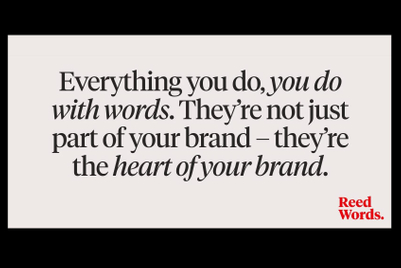
One hundred and seventy thousand. That’s supposedly the number of words in use in the English language.
So how have we reached a point where "moment" can feature in every single ad in an ad break?
Nescafé wants us to enjoy caffeinated "Moments that matter", before we’re invited to relax into a "Moment of calm" with Twinings. John Lewis showcases a range of duvets "For all life’s moments", while we "Find our moments that matter" with P&O.
Peroni neatly sums it up by telling us to "Live every moment". I am, Peroni, I am. As Vikki Ross so aptly puts it: “Moment is having a moment.”
This isn’t me throwing stones. I’m right there in the glasshouse working with a brand with a long history of moments. They laid claim to the territory back in the early 1980s long before it became ubiquitous.
So I’m particularly invested in how we’ve all ended up in the gravitational orbit of so few words. After all, it isn’t just moments’ moment. There’s “Find your x”, “Be more y”, “Unleash zzz”.
Advertising’s vocabulary has been reduced seemingly to the most meagre selection of acceptable words. While we all simultaneously preach the importance of distinction.
It’s too easy simply to blame the industry for getting lazy, or bemoan the lost art of copywriting. The reality is the job is so much harder now.
At the dawn of advertising, there were so many unused words to own, so many more unclaimed claims to make, so much more prose to play with. "We try harder", "Have a break", "Finger lickin’ good", "Beanz meanz Heinz", "Snap! Crackle! Pop!", "Never knowingly undersold".
Lines, rich in insight and idea. Gorgeous, evocative three word combinations that have stayed in popular consciousness for decades.
But one by one each word has been taken, every construct used, every idea explored. And somehow we’re left retching over “Together we joy”.
As if it wasn’t enough that we have to forage for language leftovers, there is a heightened expectation of what those words must do. No longer must it simply be the perfect encapsulation of the brand promise, it needs a sprinkling of purpose, a dash of authenticity, a pinch of zeitgeist.
The three little words are burdened with headlining the annual report as well as becoming a trending #hashtag.
More than an ad strapline, it’s now the all-pervading branded equity in every channel and for every audience. All with a global "translatability" that renders any wordplay dead.
Suddenly, “Vorsprung durch technic” becomes “Future is an attitude”, and we all let out a collective sigh.
It’s these strategic imperatives that are forcing creativity into a corner. No wonder straplines start reading like stratlines.
In trying to focus on the many things we have to do, we are forgetting about the one thing we need to do – connect with people.
It’s telling that the most iconic lines were born of campaign ideas and only later promoted to hallowed brand line status.
"I’m lovin’ it", "Think different", "Just do it", "Should’ve gone to Specsavers". Briefs where the creatives were given greater leeway to do what they do best.
Andy McLeod of BMP DDB remembers the creation of "You either love it or hate it" in 1996: “There wasn’t a brief specifically to come up with a new slogan, we certainly didn’t set out to think of one. All we did was think about what Marmite meant to us.
“What was the truth of the product... It seemed obvious to us that Marmite polarised opinion like nothing else… We just thought that was something worth talking about in advertising.”
Perhaps we need to unburden ourselves from the expectations of the brand line. Prioritise the strength in the idea over the stretchiness of application.
Open up our accepted vocabulary to the idiosyncratic, the flamboyant, the funny, the painfully truthful, the counterintuitive, the untranslatable.
Then even the most familiar of language might find a new lease of life.
Nick Emmel is founder and strategy partner of Mr President.



.jpg&h=334&w=500&q=100&v=20250320&c=1)

.jpg&h=334&w=500&q=100&v=20250320&c=1)

.jpg&h=334&w=500&q=100&v=20250320&c=1)



.png&h=334&w=500&q=100&v=20250320&c=1)







.png&h=268&w=401&q=100&v=20250320&c=1)
